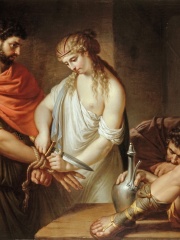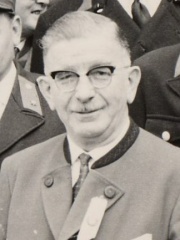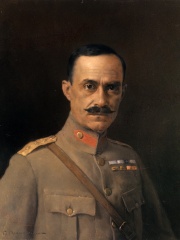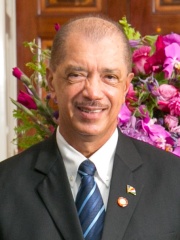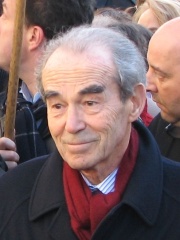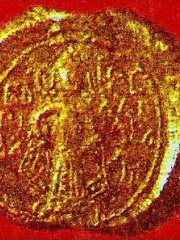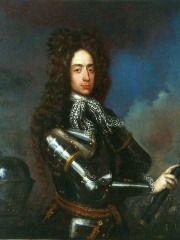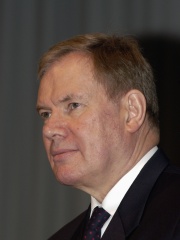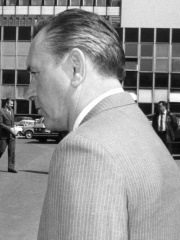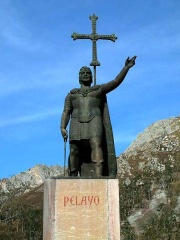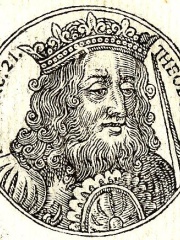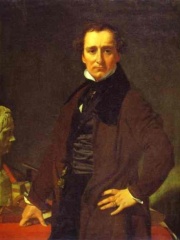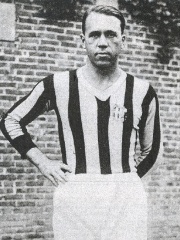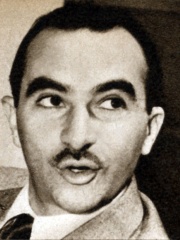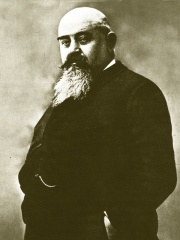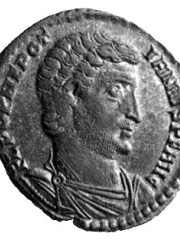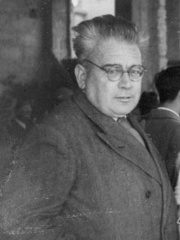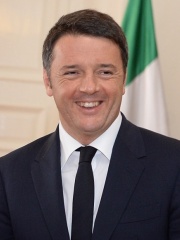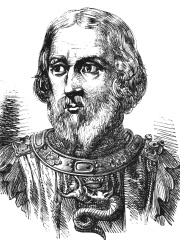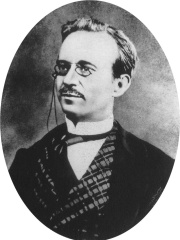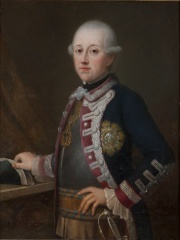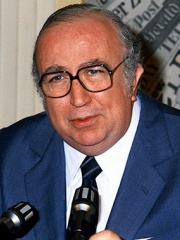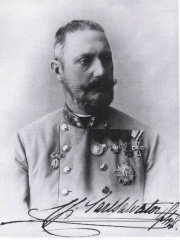POLITICIAN
Orso Ipato
726 - 737
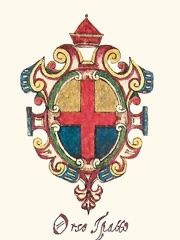
 Orso Ipato
Orso Ipato
Orso Ipato (Latin: Ursus Hypatus; died 737) was, by tradition, the third Doge of Venice (726–737) and the first historically known. During his eleven-year reign, he brought great change to the Venetian navy, aided in the recapture of Ravenna from Lombard invaders, and cultivated harmonious relations with the Byzantine Empire. He was murdered in 737 during a civil conflict. Read more on Wikipedia
His biography is available in 24 different languages on Wikipedia. Orso Ipato is the 8,772nd most popular politician (down from 8,111th in 2024), the 2,203rd most popular biography from Italy (down from 2,121st in 2019) and the 564th most popular Italian Politician.
Memorability Metrics
Page views of Orso Ipato by language
Among POLITICIANS
Among politicians, Orso Ipato ranks 8,772 out of 19,576. Before him are Aristomenes, Leopold Figl, Nikolaos Plastiras, James Michel, Robert Badinter, and Boril of Bulgaria. After him are József Antall, James Louis Sobieski, Son Sann, Paavo Lipponen, Jinseong of Silla, and Károly Grósz.
Most Popular Politicians in Wikipedia
Go to all RankingsAristomenes
700 BC - 660 BC
HPI: 62.47
Rank: 8,770
Leopold Figl
1902 - 1965
HPI: 62.47
Rank: 8,771
Nikolaos Plastiras
1883 - 1953
HPI: 62.47
Rank: 8,772
James Michel
1944 - Present
HPI: 62.47
Rank: 8,773
Robert Badinter
1928 - 2024
HPI: 62.47
Rank: 8,774
Boril of Bulgaria
1110 - Present
HPI: 62.47
Rank: 8,775
Orso Ipato
726 - 737
HPI: 62.47
Rank: 8,776
József Antall
1932 - 1993
HPI: 62.47
Rank: 8,777
James Louis Sobieski
1667 - 1737
HPI: 62.47
Rank: 8,778
Son Sann
1911 - 2000
HPI: 62.47
Rank: 8,779
Paavo Lipponen
1941 - Present
HPI: 62.47
Rank: 8,780
Jinseong of Silla
865 - 897
HPI: 62.47
Rank: 8,781
Károly Grósz
1930 - 1996
HPI: 62.46
Rank: 8,782
Contemporaries
Among people born in 726, Orso Ipato ranks 1. Among people deceased in 737, Orso Ipato ranks 3. Before him are Pelagius of Asturias, and Theuderic IV.
Others Born in 726
Go to all RankingsOthers Deceased in 737
Go to all RankingsPelagius of Asturias
POLITICIAN
685 - 737
HPI: 73.79
Rank: 1
Theuderic IV
POLITICIAN
712 - 737
HPI: 71.56
Rank: 2
Orso Ipato
POLITICIAN
726 - 737
HPI: 62.47
Rank: 3
In Italy
Among people born in Italy, Orso Ipato ranks 2,203 out of 5,161. Before him are Lorenzo Bartolini (1777), Guenther Steiner (1965), Virginio Rosetta (1902), Walter de Silva (1951), Alberto Lattuada (1914), and Adriana Asti (1931). After him are Servius Sulpicius Galba (-190), Giuseppe Giacosa (1847), Nepotianus (400), Dacia Maraini (1936), Amadeo Bordiga (1889), and Matteo Renzi (1975).
Others born in Italy
Go to all RankingsLorenzo Bartolini
SCULPTOR
1777 - 1850
HPI: 62.49
Rank: 2,197
Guenther Steiner
ENGINEER
1965 - Present
HPI: 62.49
Rank: 2,198
Virginio Rosetta
SOCCER PLAYER
1902 - 1975
HPI: 62.49
Rank: 2,199
Walter de Silva
POLITICIAN
1951 - Present
HPI: 62.49
Rank: 2,200
Alberto Lattuada
FILM DIRECTOR
1914 - 2005
HPI: 62.48
Rank: 2,201
Adriana Asti
ACTOR
1931 - 2025
HPI: 62.47
Rank: 2,202
Orso Ipato
POLITICIAN
726 - 737
HPI: 62.47
Rank: 2,203
Servius Sulpicius Galba
POLITICIAN
190 BC - 130 BC
HPI: 62.46
Rank: 2,204
Giuseppe Giacosa
WRITER
1847 - 1906
HPI: 62.46
Rank: 2,205
Nepotianus
POLITICIAN
400 - 350
HPI: 62.46
Rank: 2,206
Dacia Maraini
WRITER
1936 - Present
HPI: 62.45
Rank: 2,207
Amadeo Bordiga
POLITICIAN
1889 - 1970
HPI: 62.44
Rank: 2,208
Matteo Renzi
POLITICIAN
1975 - Present
HPI: 62.43
Rank: 2,209
Among POLITICIANS In Italy
Among politicians born in Italy, Orso Ipato ranks 564. Before him are Galeazzo I Visconti (1277), Urbano Rattazzi (1808), Liutpert (680), Aripert II (680), Victor Amadeus II, Prince of Carignano (1743), and Walter de Silva (1951). After him are Servius Sulpicius Galba (-190), Nepotianus (400), Amadeo Bordiga (1889), Matteo Renzi (1975), Giovanni Spadolini (1925), and Archduke Karl Salvator of Austria (1839).
Galeazzo I Visconti
1277 - 1328
HPI: 62.56
Rank: 558
Urbano Rattazzi
1808 - 1873
HPI: 62.56
Rank: 559
Liutpert
680 - 702
HPI: 62.54
Rank: 560
Aripert II
680 - 712
HPI: 62.52
Rank: 561
Victor Amadeus II, Prince of Carignano
1743 - 1780
HPI: 62.51
Rank: 562
Walter de Silva
1951 - Present
HPI: 62.49
Rank: 563
Orso Ipato
726 - 737
HPI: 62.47
Rank: 564
Servius Sulpicius Galba
190 BC - 130 BC
HPI: 62.46
Rank: 565
Nepotianus
400 - 350
HPI: 62.46
Rank: 566
Amadeo Bordiga
1889 - 1970
HPI: 62.44
Rank: 567
Matteo Renzi
1975 - Present
HPI: 62.43
Rank: 568
Giovanni Spadolini
1925 - 1994
HPI: 62.41
Rank: 569
Archduke Karl Salvator of Austria
1839 - 1892
HPI: 62.40
Rank: 570
